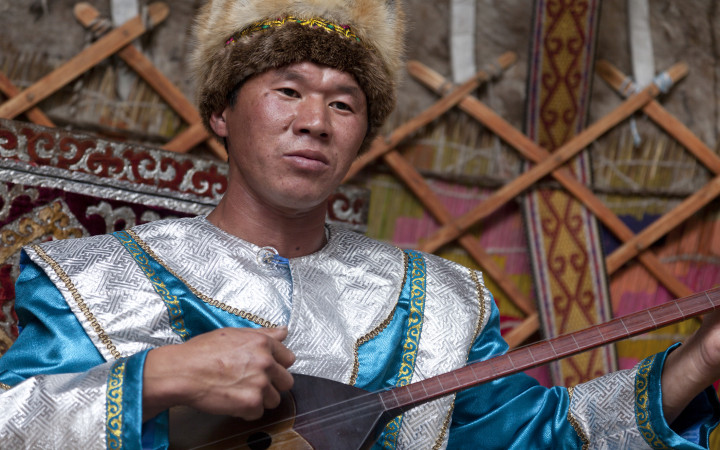Today’s Wonder of the Day was inspired by michael. michael Wonders, “How do you sing Tuvan throat singing?” Thanks for WONDERing with us, michael!
Do you like to sing? In Wonderopolis, we sing all the time! Would you like to try it with us? Okay, let’s start with a high note. Now, let’s try a low note. That’s great! Now for the real trick. Try singing the high note and the low note at the same time.
That’s hard, isn’t it? Some might think singing two notes at the same time requires superhuman abilities. However, Tuvan throat singers have been doing it for many years!
What is Tuvan throat singing? It’s a kind of singing in which the vocalist sings more than one note at a time. The songs often have one low, constant note with higher notes added to make harmony.
How is this possible? When we sing, many notes blend together to make the sound. Since they’re blended, we can’t hear the notes separately. To make different notes clearly heard, throat singers make some notes louder than others. They do this by using parts of the larynx.
Do you know where your larynx is? That‘s right, it’s in your throat! The larynx is made of two vocal folds. The speed of vibration in these vocal folds decides the pitch of sound when you sing. Tuvan throat singers squeeze these vocal folds to make some pitches louder than others.
What kind of music is common in your culture? In America, both hip hop and country music have deep cultural connections. In the same way, throat singing is a piece of Tuvan culture. It’s a tradition that started thousands of years ago. Tuva is a part of Russia between Siberia and Mongolia. It is home to high mountains, quick streams, and diverse wildlife. The Tuvan people lived as herders and hunters for many generations. Today, Tuva is still largely agricultural. However, its mining and timber industries have also grown.
Throat singing started because Tuvans wanted to mimic nature. They train in childhood to imitate birdsong, whistling wind, and roaring streams. They use circular breathing to hold the notes for long periods of time. Tuvans call the practice “Khöömei,” and it is a key part of their culture.
Throat singing is most well-known as a Tuvan practice, but it’s part of other cultures as well. The Inuits, native people of northern Canada, also practice throat singing. So do the Xhosa people in southeast South Africa.
Tuvan throat singing may have old roots, but it’s still very much alive today. Children begin throat singing at a young age and practice it all their lives. Tuvan throat singing groups even travel to bring their music to other parts of the world. Popular groups include the Alash Ensemble, Tyva Kyzy, Yat-Kha, and Huun-Huur-Tu.
Do you want to learn throat singing? What sounds will you imitate? Maybe you’d enjoy other types of folk singing, like yodeling! Warm up your vocal cords and jump into any style of singing you enjoy.
Standards: ELA.RH.6-8.2, ELA.R.6-8.10, CCRA.R.2, CCRA.R.3, CCRA.R.10, ELA.RST.6-8.2, ELA.RST.6-8.10, CCRA.W.2, CCRA.SL.1, CCRA.SL.2




